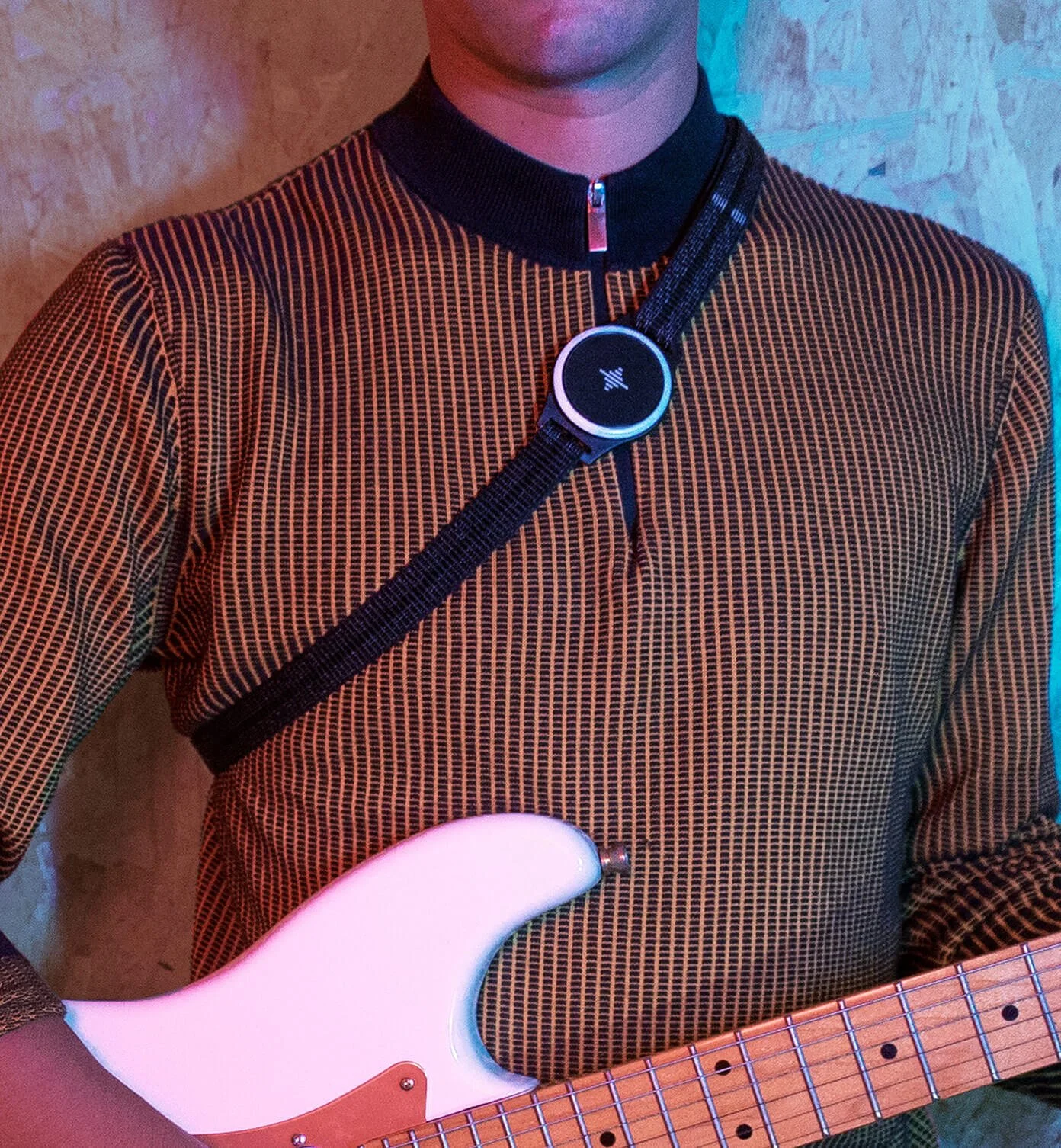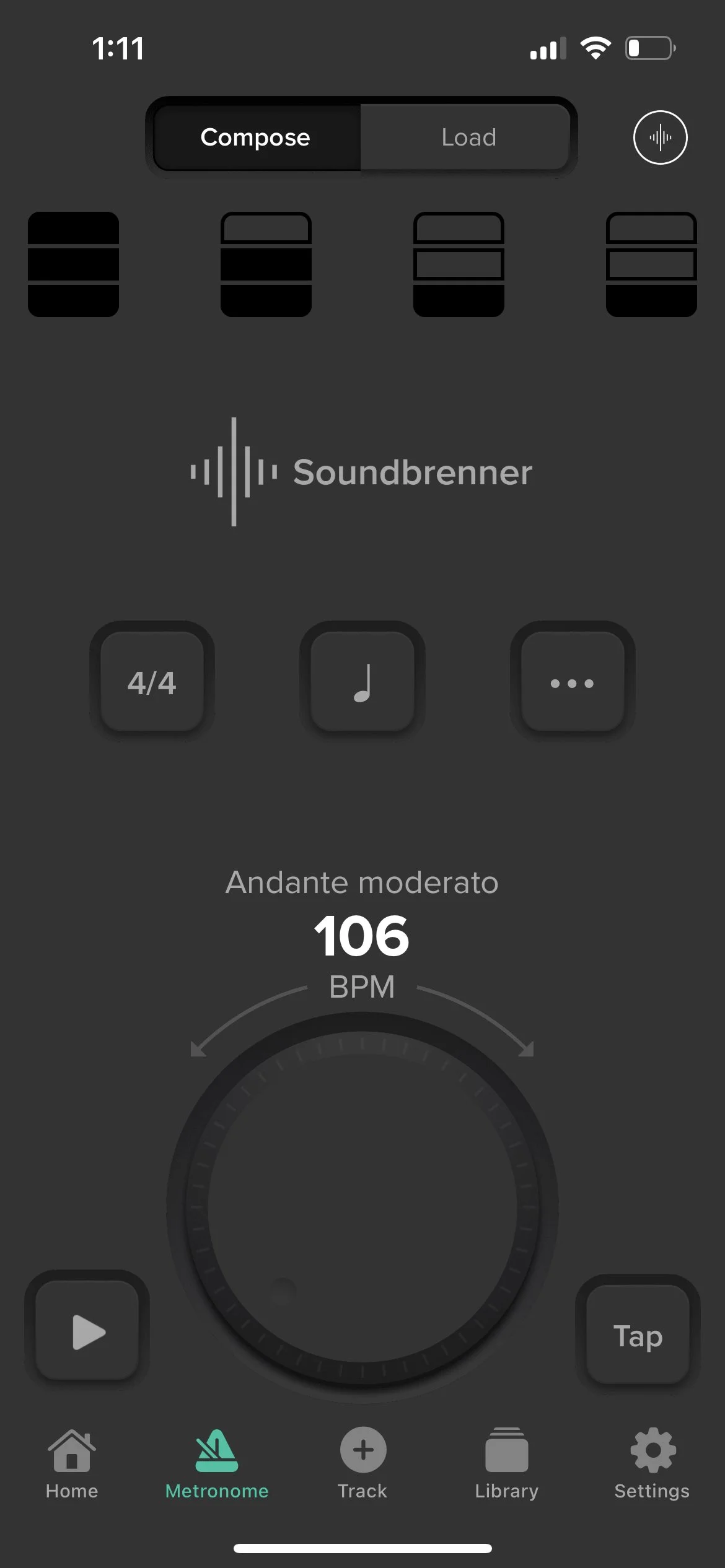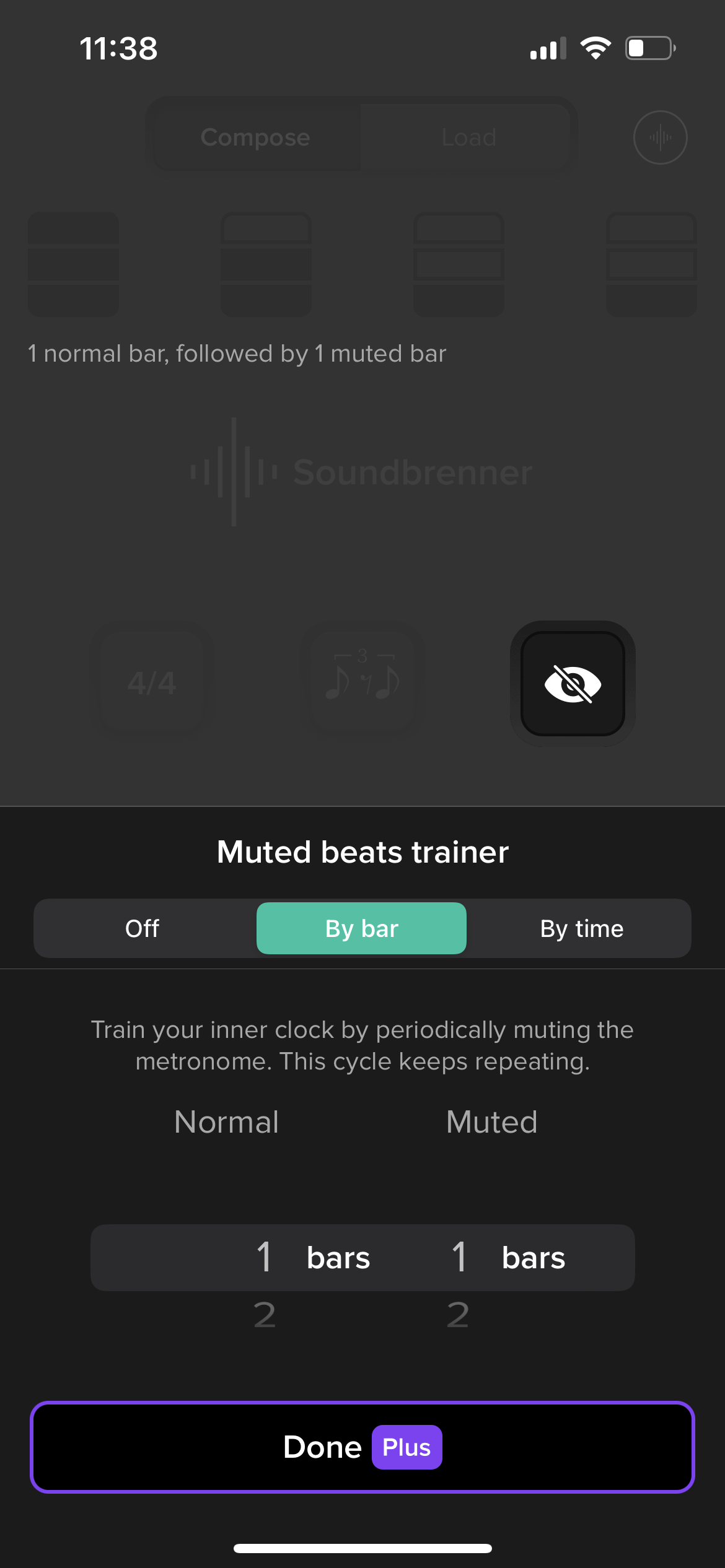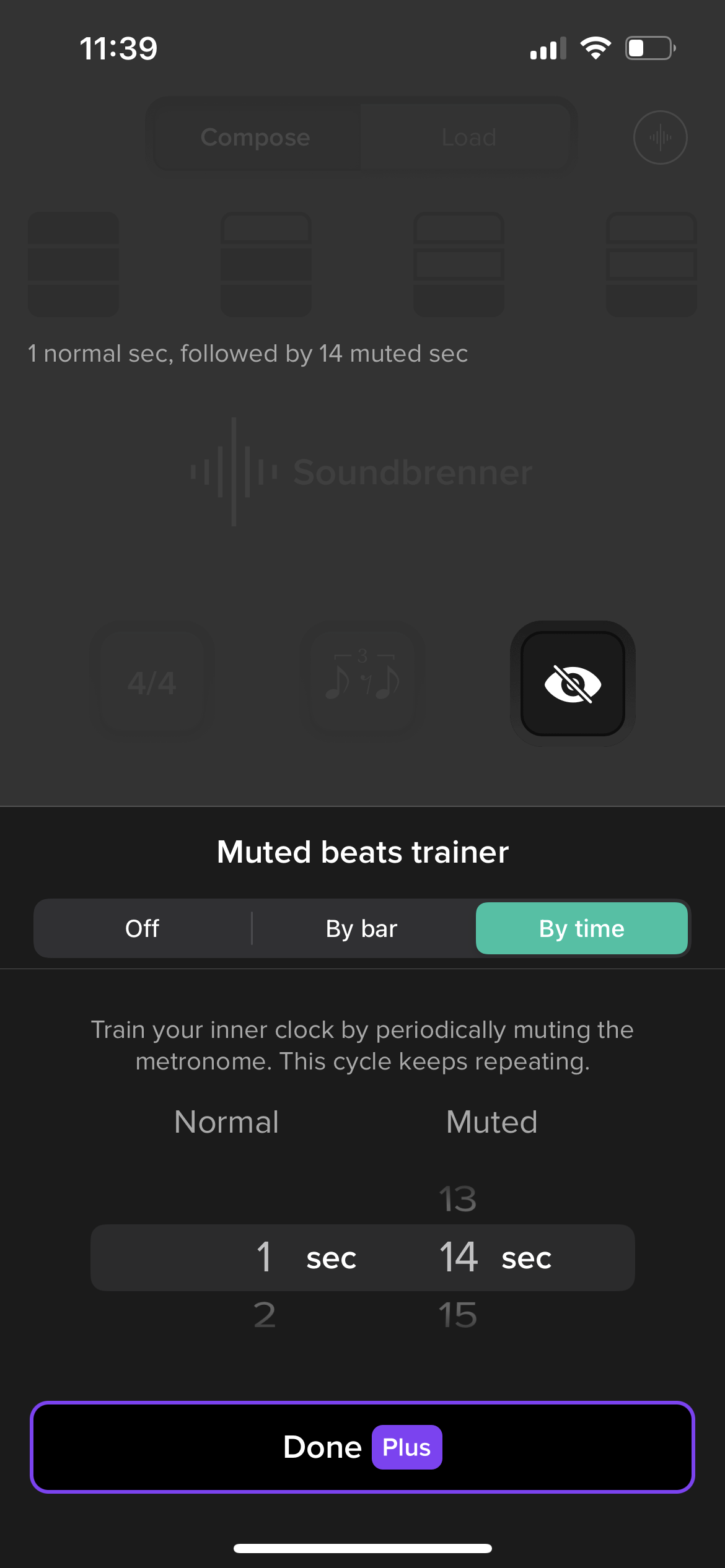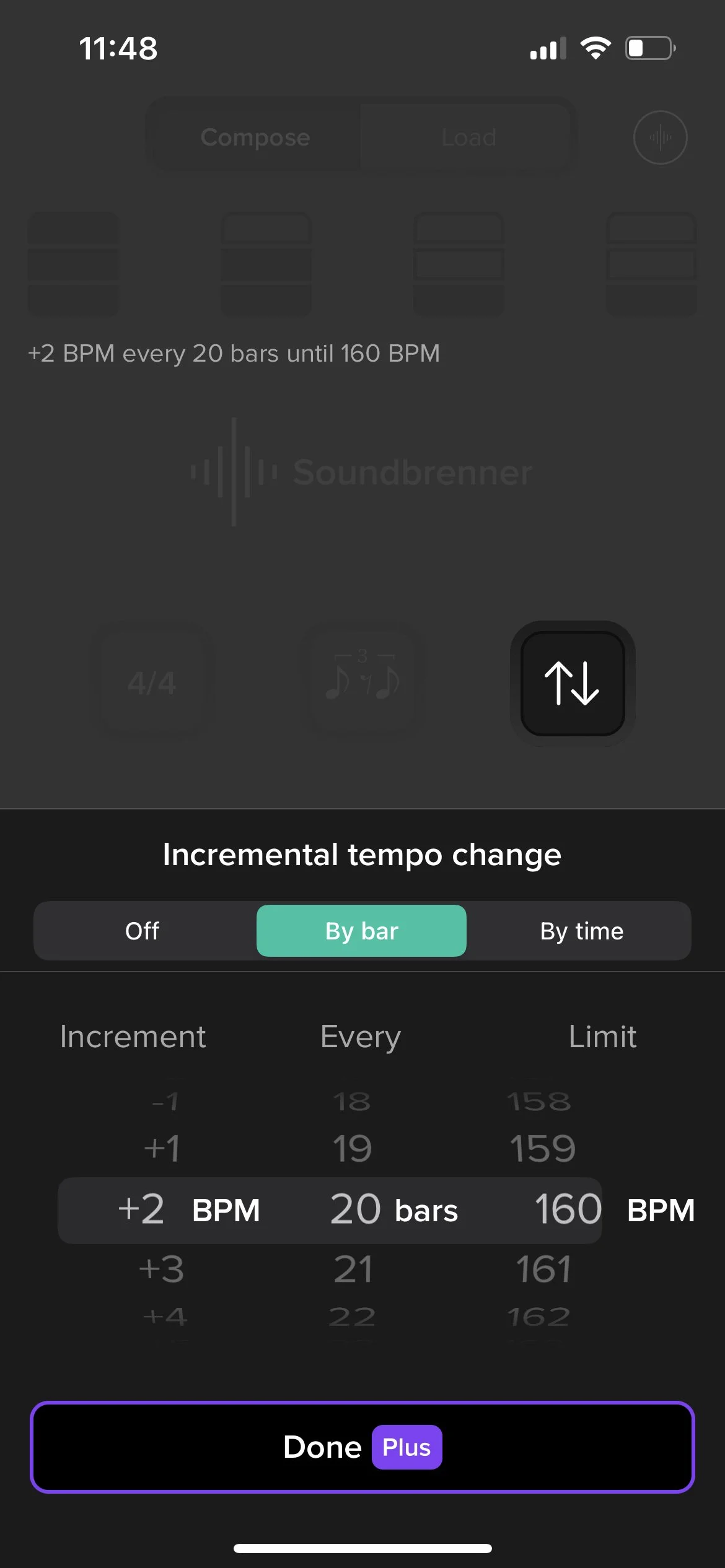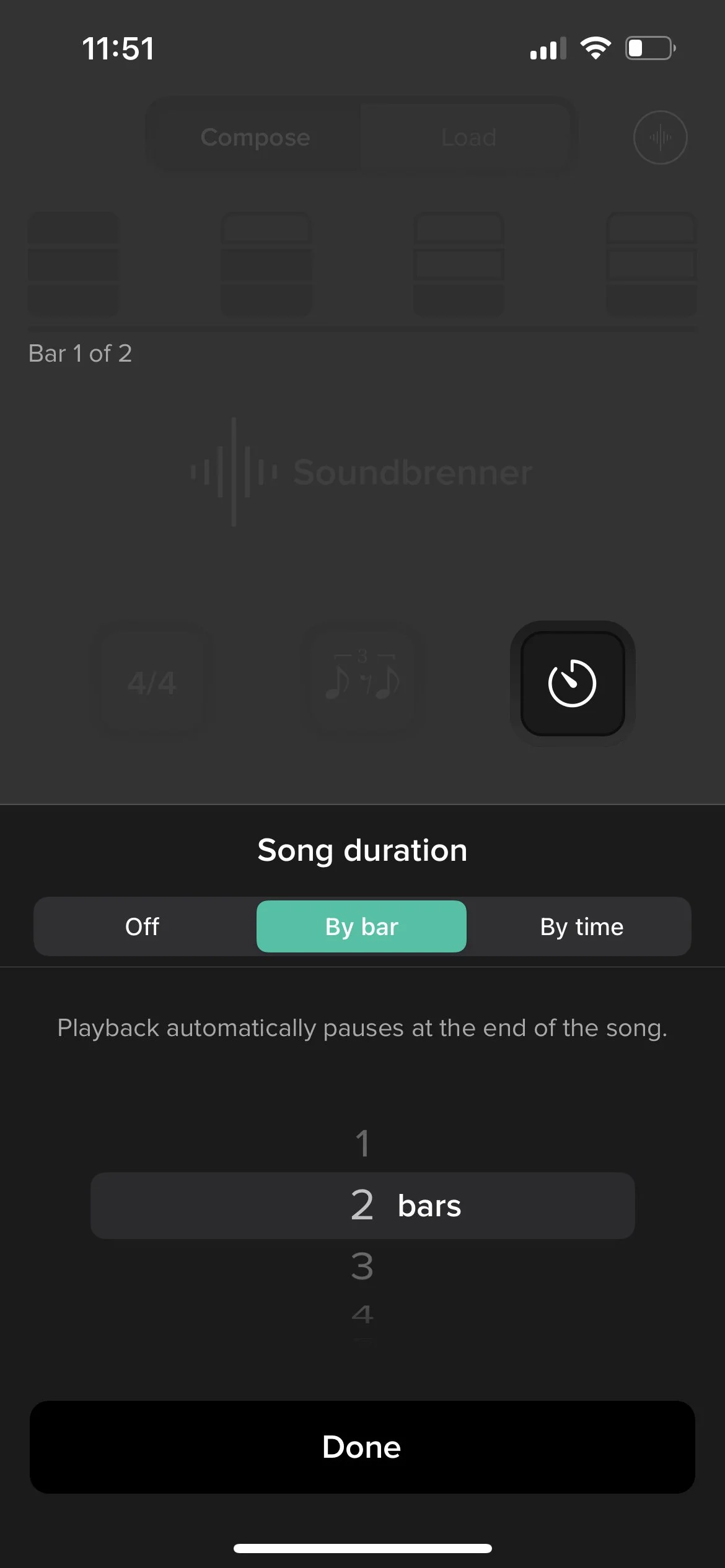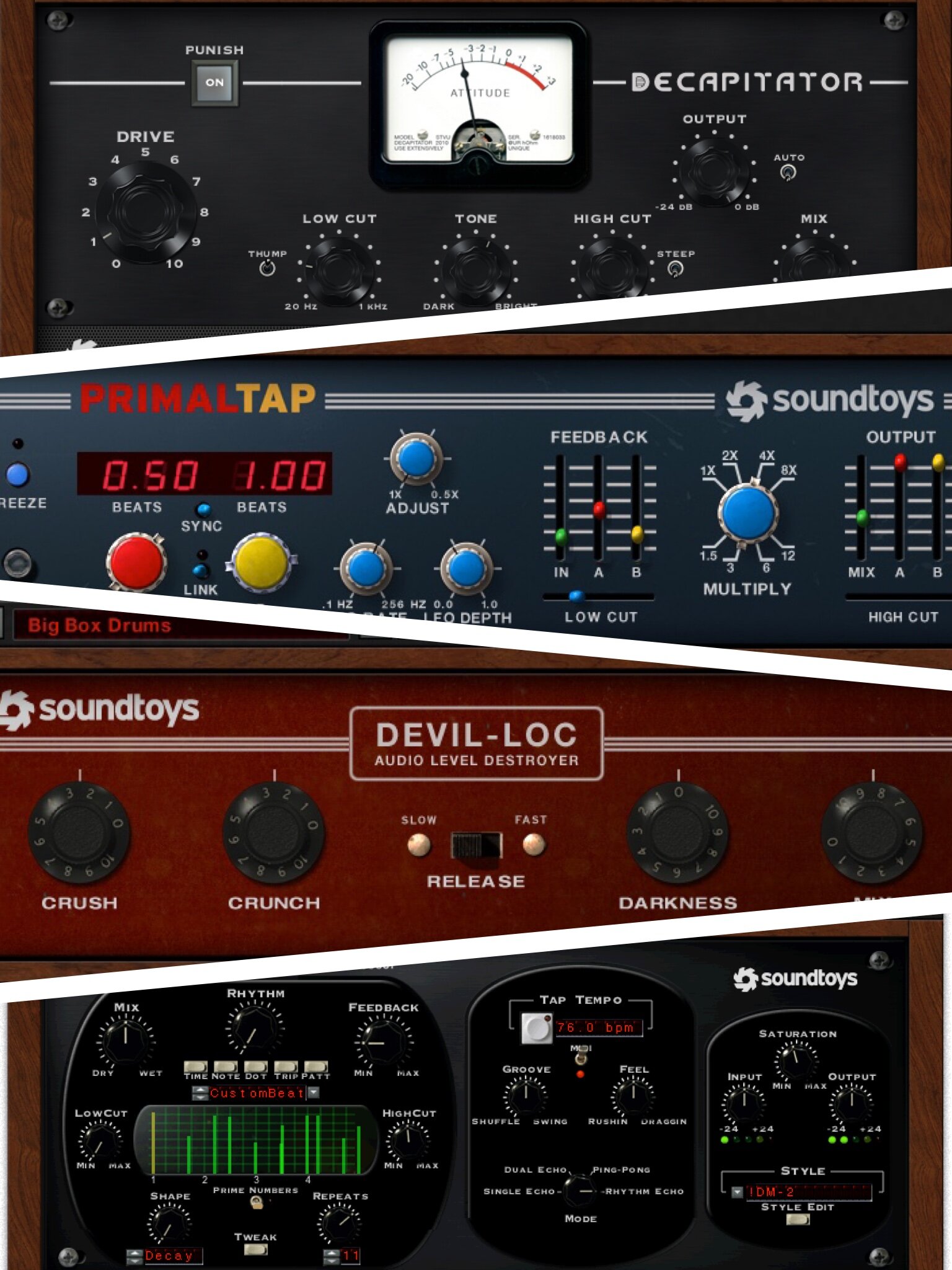Soundbrenner Pulse Wearable Vibrating Metronome
When I think of the passage of time, there are tools that I'm surprised haven't evolved sooner. One of those musical tools is the metronome. For many decades, the concept of what a metronome could be seemed cemented.
I'm not trying to imply that the metronome did not evolve. Metronomes with odd time signatures and programmable set lists appeared. Even though those small evolutions happened, one noticeable change hadn't occurred: Feeling a metronome instead of hearing it.
Peterson (the company known for strobe tuners) developed a vibrating accessory to a metronome that would attach to your pants. But it didn't take off for whatever reason and is now discontinued. Players didn't like attaching the vibrating accessory to their belt or felt it was limited to a physical connection to a metronome.
Upon discovering this now-discontinued accessory from Peterson, I researched another company that made a vibrating metronome.
I was interested in a vibrating metronome for a couple of reasons. First, I wouldn't say I like hearing someone, including myself, check a metronome on a gig, but there are times I need to check the tempo of a song.
I have poor eyesight, and although many metronomes have lights to show the time, it's hard for me to read them. An ideal metronome would be one that I could feel.
The second reason is rhythm combines a feel and math art. You have to conceptualize rhythm and know how it feels when you use it. Learning how time signatures feel is easier when you have a reference.
Many of us spent many years learning to feel rhythm and time signatures. Using vibrations to teach rhythm would speed up musicians' progress in rhythm studies.
My research led me to find Soundbrenner, which makes a wireless vibrating metronome that can be worn as a watch, across your body, or on your ancle.
The Soundbrenner Pulse intrigued me. Although I was curious about using a metronome that vibrated, I hadn't used one.
Hearing a metronome while playing an instrument can be difficult. It can also be, well, annoying. Often, the sounds used for metronomes could be more pleasant. The reason for these abrasive tones is for them to cut through and be heard.
These unfriendly sounds prevent some musicians from using a metronome as much as they should. They tend to be annoying the people in adjacent rooms as well. Click, click, click, click.
Wouldn't it be nicer to have a personal metronome that the rest of the world doesn't hear? A metronome that isn't as grating on your ears?
These are issues the Soundbrenner Pulse solves.
Impressionistic
My first impression of testing the Pulse is it makes practicing with a metronome more enjoyable.
The Pulse connects to the Soundbrenner app on your phone, where you can make overall adjustments, such as how strong the vibrations are or whether the Pulse lights up with each beat.
In the metronome side of the app, we can save setlists and make adjustments to the time signature and what note value gets a beat.
One feature I like is that you can adjust the stress of a beat reflected in sound and vibration. You can stress a beat to accent beat one or any beat, which is handy for getting used to playing in odd-time signatures. Feeling the variation of vibration on beat 1 of a 7/8 time signature is very helpful.
Odd time signatures are often broken into groups for feel. For example, if we have a 5/4 time signature, it's not uncommon for the groove to feel like three beats and two beats or two beats and three beats.
You can set up the Soundbrenner Pulse to emphasize these bar subdivisions, which is available in other metronomes, but not the ability to feel it (except the Pulse gives us three options for sounds, lights, or vibrations per beat)!
Feeling odd time signatures with these 3,2, or 2,3 subdivisions (in 5/4 as an example) is incredibly helpful to a student's progress in learning to play in odd time signatures.
I love that the Soundbrenner Pulse allows me to conceptualize and feel time. You have to do both to have a handle on time. The Pulse is a tool to speed up that journey. But not just accelerate the process but make it more enjoyable.
Muted Beats Trainer
There are many reasons we want to work out with a metronome. One is to be able to count and know exactly where we are in a bar or play/count tricky rhythms. Another is to be able to check a song's tempo to ensure we are at the right speed. Finally, we want to build up a better sense of stable, consistent time.
The Soundbrenner app, in conjunction with the Pulse, allows us to mute a measure. You could play one bar with hearing the metronome and then play one bar without hearing the metronome. Alternating the metronome on and off allows you to test your time.
Drummers have adjusted metronomes to different speeds in the past, so they only hear beat one. The point is that each time beat one comes around, you should have stayed in perfect time.
Soundbrenner has made this easier by allowing you to keep the same tempo you're working at and simply mute bars. It should be noted that this feature (as well as some other features) is part of the Pro Subscription plan that gives you advanced features for a monthly fee of $7.99 a month (or a reduced rate if you pay for the whole year upfront).
Incremental speed
We also have the option on the app to gradually speed up the tempo, which is great for when you're working on something challenging and need to start slow but keep pushing the tempo.
Here is an example: I want to work on the Altered scale. I will set the Pulse to start at 50bpm and gradually speed up until I find the spot where it's out of reach. It's a fantastic option.
You can choose to speed up by bar (say, every 20 bars) or by a time increment (1 minute or so). The Soundbrenner products required a lot of thought in the design phase.
Song Duration
Often, on gigs, I need to reference a tempo to start the song. Since I'm not paying to click for the whole song, I want to avoid hearing, seeing, or feeling it after a bar or two. With the Pulse and Soundbrenner app combo, I can set the song duration for each saved song to 2 bars, after which the metronome will stop pulsating.
It is useful and allows a metronome on a gig to be even more incognito.
Metric Modulation
The only option I wish the Soundbrenner Pulse had was the ability to create metric modulations over several bars. It would be great to connect a bar of 4/4 to a bar of 5/8, for instance, or create an 8-bar phrase with metric modulations. Such a feature would really allow us to get deeper into the intricacies of meter use in compositions. Maybe we will see such a feature at some point.
Lights
I usually have a hard time focusing on the lights with a metronome. As mentioned, I have a sight impairment. Soundbrenner was mindful of the visual representation of beats. In the same way, we have three different types of vibration available for each beat; we have three different colors available for each beat.
The light on the Pulse watch is bright but somehow gentle. It doesn't shock my eyes like many other lights on metronomes. Even when the tempo is fast, I can accurately discern the beats.
I was interested in the Soundbrenner Pulse for its vibrating feature. I found out that they set out to conquer all the aspects of metronome functions. You can hear the metronome on the app if you like; you can feel the Pulse or see the lights on the Pulse.
The Pulse comes with a large band for attaching to your ankle and a smaller band for use, like a watch. I also ordered the body strap because I wanted to see what it felt like to wear it around my chest or back.
Where I wear the Pulse depends on my usage. If I want to start and stop the Pulse frequently or adjust the tempo by rotating the side of the Pulse or tapping the tempo on the faceplate, I keep it where it's easy to reach, on my wrist or chest.
If it's for a gig and I recall songs from a setlist, I place it on my ankle so it's out of sight.
Charger
The Pulse is rechargeable and comes with a magnetic cable that is easy to attach. I wish all my chargeable devices were so easy to connect.
Working out with a metronome is incredibly important every time you practice rhythm. Let's look at cross-rhythms as an example. I've taught some students cross-rhythms, such as three-against-four patterns. Students need to get used to the feel of such cross-rhythms with a stable time foundation. Feeling a metronome while working out cross-rhythm patterns clarifies the pattern, especially when you set to beat 1 to a stronger pulse.
The same can be said for hemiola, polyrhythms, and quarter note triplets.
I set the Pulse to a triplet pattern for teaching quarter note triplets and have the students clap out where the quarter notes land.
But, I can also remove the middle 8th note from an 8th note triplet to imitate a swing feel, which helps acquaint students with the basics of a swing feel, which is easier if you don't have a feel reference.
Conclusion: I obviously like the Soundbrenner. It is an excellent asset for gigs and practice. I’ve been recommending it to my students as an essential tool for learning counting and rhythm.


